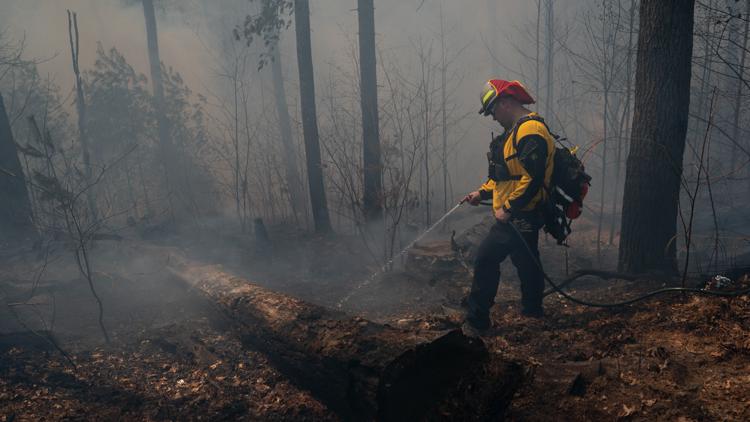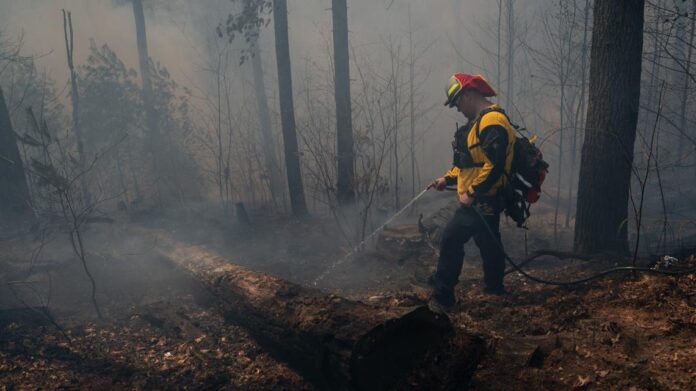
Forest officials use different terms to update wildfire conditions. Here’s the difference between contained, controlled and extinguished fires.
CHARLOTTE, N.C. — Wildfires continue to burn in North Carolina and South Carolina, with thousands of acres being scored by mostly uncontrolled fires.
Since the fires were first reported, officials have provided updates on how much the fires are or aren’t contained and taken different approaches to each fire. But what exactly does containment mean for a wildfire compared to being extinguished?
OUR SOURCES
WHAT WE FOUND
Let’s look at these three words that you have probably been hearing since these fires started:
According to the U.S. Forest Service, a fire is contained when the fire is encircled by constructed fire lines made by fire crews or fuel breaks, which are roads, streams, or something natural that would stop a fire.
When this happens, there is an expectation that the fire will not cross these lines. For example, when a fire is 20% contained, that means some combination of fire lines and fuel breaks surround 20% of the wildfire.
However, that doesn’t mean the fire is 20% out. It just means those lines are expected to stop the spread of the fire.
When it comes to a fire being controlled, that means it is 100% contained by fire lines and crews have extinguished flames and removed unburnt fuels about 300 feet inside the fire line perimeter. It’s important to remember this doesn’t mean a fire is finished, as crews still have to monitor hotspots to ensure it doesn’t spark back up.
When a fire is out, that means there are no hotspots and no smoke is detected within the lines for at least 48 hours. Large wildfires are often watched and patrolled until a significant amount of rain falls.
Contact Meghan Bragg at mbragg@wcnc.com and follow her on Facebook, X and Instagram.



